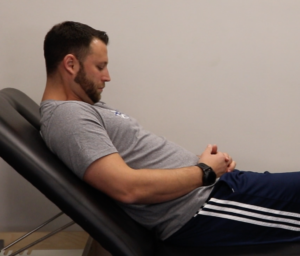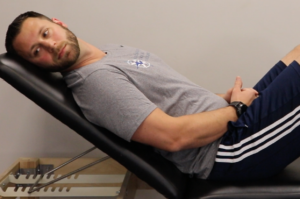In my last post we talked about making sure you were treating a mobility problem with a mobility intervention. This seems obvious when you think about, but it can very often be missed. If you haven’t read that, you can take a look here.
What I want to cover here is a little less obvious. The mistake of delivering a mobility intervention for a motor control impairment. This is easiest to look at with a patient example.
You are assessing a patient and notice reduced cervical range of motion with the patient sitting. You may elect to prescribe a few stretches. Or maybe your go-to is soft tissue work or some mobilizations and manipulations are the prescription of choice. Whatever it is, you are looking to increase range of motion through interventions that increase tissue pliability. But what if that’s not the problem??
We often miss a step here. How can you say it is a mobility restriction without checking passively? If you had a patient who couldn’t reach overhead, you would lay them down and assess passive motion of the shoulder to determine whether it is an active or passive issue, right? Yet, we rarely do this with the cervical spine.
What if, before you delivered your mobility interventions to the cervical spine patient, you rechecked the motion passively in supine. Sometimes, the patient’s range of motion is suddenly fine! This isn’t a mobility issue! It’s an issue of their inability to relax global musculature sufficient enough to allow full range of motion. It’s not until they are unweighted and the global musculature relaxes that full range is allowed.
If you find this, your intervention is no longer directed at mobility. Instead, you need to intervene with education and a motor control approach! In these cases, my go-to approach is typically to alter forces that the neck is experiencing. You can unweight it, you can increase the axial load, and you can add resistance. There’s no one way to do this that works for every patient and each patient seems to respond differently. If one way doesn’t work, try the next. Here’s a few ideas of how you can alter forces to improve motor control for your patient.
- Flexion and Rotation Shown: unweighted initially (typically supine exercise), then progressed towards increasing gravity with a lawn chair progression


- Added resistance: add a theraband to resist the movement or a theraband on top of the head pulling downward to increase axial loading

Ari Kaplan is the CEO and Founder of The Association of Clinical Excellence (ACE). ACE strives to Make Excellent Results Possible for ALL Clinicians. They focus on a cohort model which has been independently tracked and demonstrated substantial improved clinical outcomes. You can find more about ACE and their cohort model here.